Behind the scenes on The Shape of Water
Discover how the film's creative team made stunning aquatic visual effects.
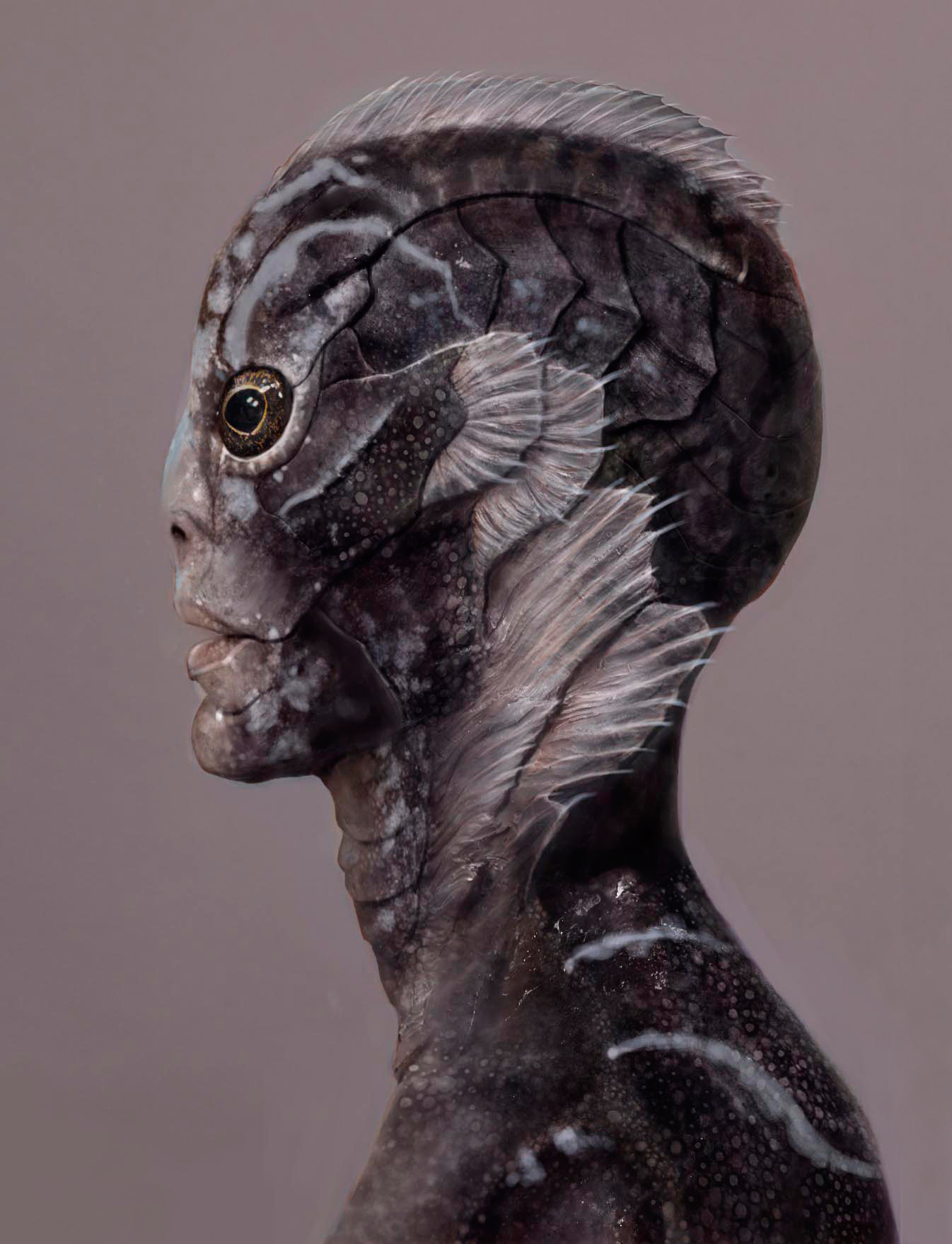
Don't miss Vertex 2018, our debut event for the CG community. Packed with inspiring talks from industry pros working in games, VFX and more, plus career advice, workshops, an expo and more, if you work – or play – in CG, it’s unmissable. Book your ticket now.
For filmmaker Guillermo del Toro (Pan’s Labyrinth), fairy tales are a way to address social issues as universal themes, and the cross-species romance. The Shape of Water explores the idea that love can be found in various forms against a backdrop of paranoia and bigotry.
The pivotal concern for the $19 million dollar production was to have audience members believe that an amphibian creature – captured from the Amazon and taken to a secret American government facility – could have an affair with a mute cleaning lady.
01. Creating a believable creature
To create a captivating and unconventional leading man, del Toro relied on the practical expertise of Legacy Effects co-owners Shane Mahan and Lindsay Macgowan, the design talents of sculptor Mike Hill, the digital knowledge of production VFX supervisor and Mr. X CEO Dennis Berardi, and the performance of acclaimed actor Doug Jones.
Design work had already begun on the amphibian man. “We met Guillermo, David Grasso and David Meng at Bleak House,” explains Legacy Effects co-owner Lindsay Macgowan.
“Our job was to take the best elements of the maquette that the two Davids had done and create a new one. Normally the consideration of having a human inside isn’t necessarily the top priority at that point in concepting character. However, we already knew that Doug Jones was going to be the creature so we had a scan of him.”
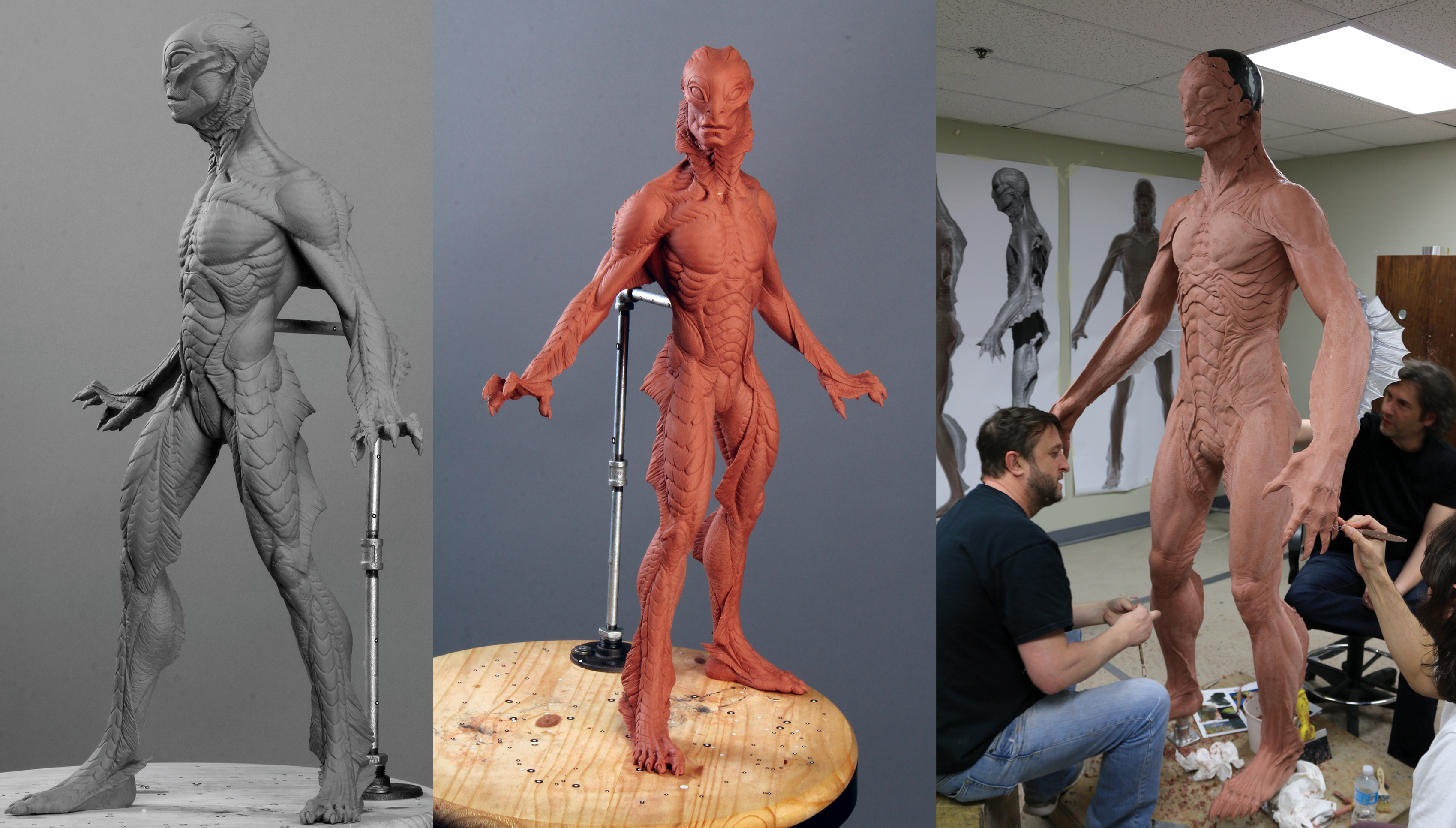
Utilising ZBrush, Legacy Effects sculptor Glen Hanz digitally pieced together a new version of the amphibian man. “It was a fully painted maquette on an electric turntable. We had a little UV light that you could show character; however, we already knew that Doug Jones was going to be the creature so we had a scan of him.”
Get the Creative Bloq Newsletter
Daily design news, reviews, how-tos and more, as picked by the editors.
Utilising ZBrush, Legacy Effects sculptor Glen Hanz digitally pieced together a new version of the amphibian man. “It was a fully painted maquette on an electric turntable. We had a little UV light that you could show the bioluminescence coming on and off as the character turned around. Also, with the regular light you would see the translucency through the fins.”
Making the creature attractive
Assisting Hanz on sculpting the body was Mario Torres, while Guillermo del Toro brought in friend and sculptor Mike Hill to redesign the facial features. “My main concern was that the lady has a relationship with this creature so he had to be somewhat attractive,” remarks Hill.
“Guillermo wanted a lot of things in there like Jean Marais’ handsomeness in Jean Cocteau’s Beauty and the Beast and Jack Kirby-esque lines. There were a lot of references to combine in one face.“
“I went over to Guillermo’s house for a couple of days and from 8am to midnight I would sculpt the head. Guillermo would come in and out and make suggestions. By the end of that 40-hour period we had nailed the look.”
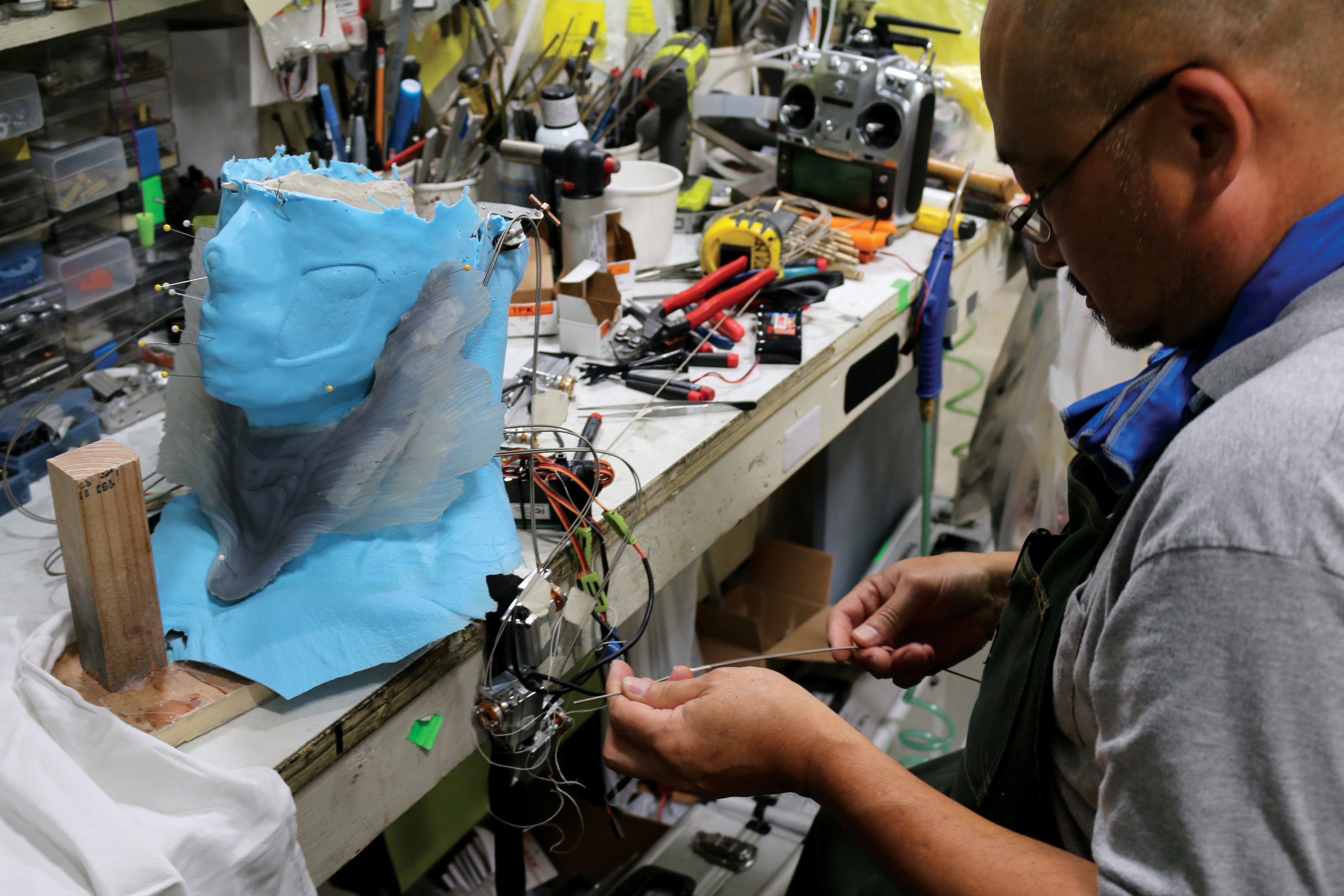
Initially the plan was to have a mechanical head for the amphibian man. “Guillermo would say, ‘It’s got to emote, kiss a girl and be able to smile,’” remarks Mahan.
“That’s when the alarm bells went off in our heads: ‘We can’t do this mechanically because it’s not like the face is only going to do two or three moves throughout the entire movie. Let’s go with a make-up approach and bring the face right down to Doug Jones’.“
“We did a clay press over the head of Glen Hanz’s maquette and that gave us the proportions, as a lot of the shapes were already balanced to Doug’s. Early on in our development phase I tried to envision Doug in the make-up chair at 3am,” reveals Mahan when describing the amphibian man transformation process that would take three hours to complete each day.
Huge transformation
“The suit has a backpack that’s hidden so to enable Doug to forcibly crawl inside. The feet are attached which is uncommon. We wanted the line of his calf and Achilles heel to be that of a swimmer’s body. Anytime you break something you will produce a line inadvertently. Doug had to sit in the suit while we did the make-up. A fibreglass skullcap went on that had a silicone magnetic goggle system to attach the eyes to. It also attached his mechanical gills to his neck.“
"From there the facial make-up that Mike had sculpted got put on. There was a silicone back of the head. Guillermo wanted the face to be foam rubber. There’s a thin tight hood that just went up and over the skullcap. We would glue the hood to the skullcap. Then you could put the headpiece on, so Doug was really encased in this thing. If Doug had to go to the bathroom we would have to unglue his glove so that his hand could be free.”
A last-minute overhaul was made to the colour pallet of the creature suit. “We did a film test which resulted in Dan Laustsen [cinematographer], and Guillermo determining that it was too pale,” remarks Mahan. “The suit went to Mike Hill’s shop for a painting overdo.” The patterning remained the same but the seven coats of underpainting were altered.
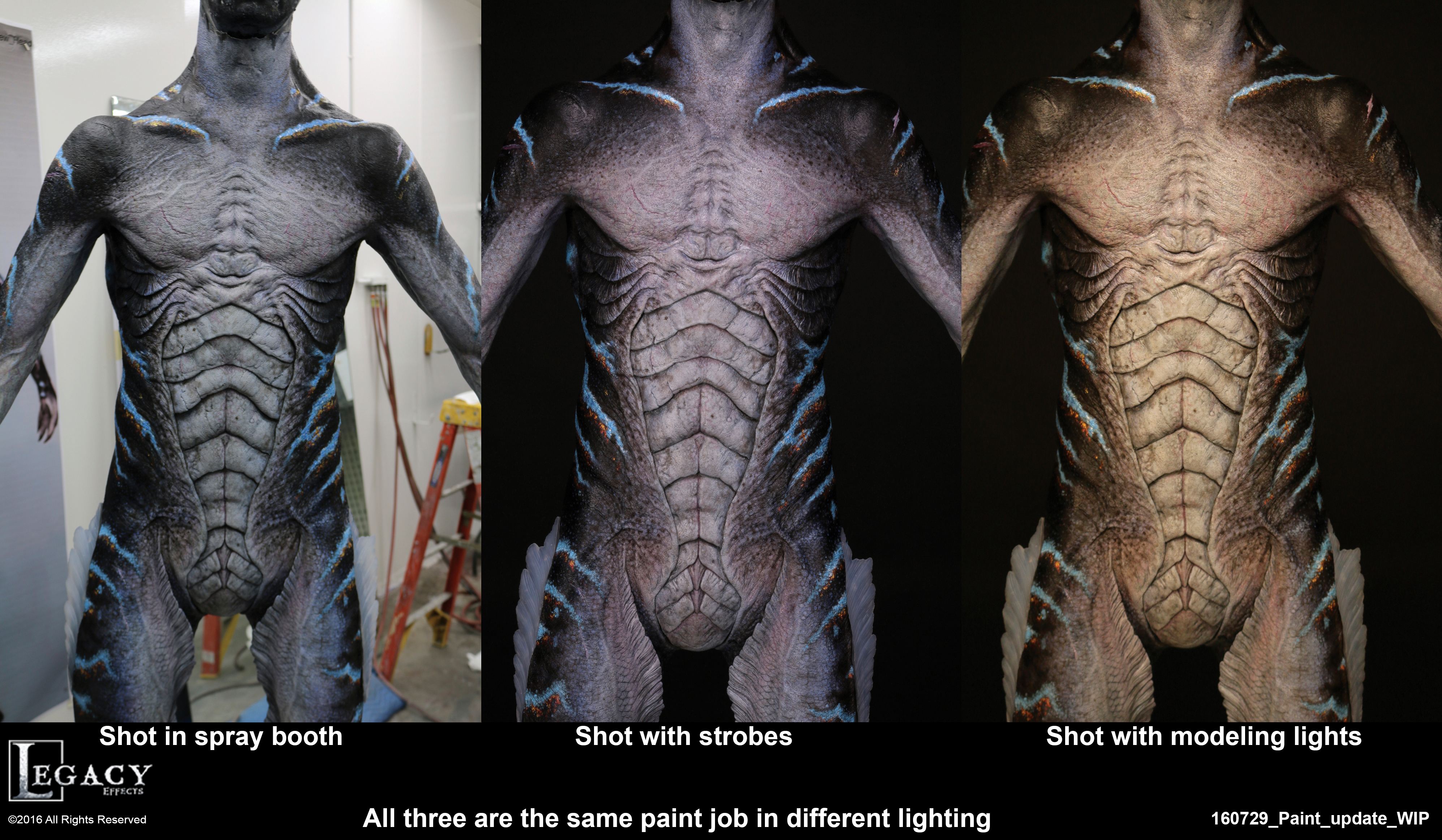
“The original colour was a stone grey but we changed it to a yellow ochre on the chest and had iridescent black and blue velvet on the back,” states Hill. “We also broke up the high points on the biceps and buttocks. Guillermo gave me a reference of a salamander that he liked.”
The colour alteration led to only one of the four suits being ready for the first week of filming. “It was nerve-wracking to get Doug out at night and ring that suit out,” admits Mahan. “It had about 60 pounds of water in it and had to be dry for the morning. I would peel off the damaged areas and Mike would touch up the paint because foam rubber paint and water are not friendly to each other. And you can imagine Guillermo’s highly tuned sense of attention to detail on a suit that has been cooked for a day. It was a challenge.”
Expressing emotion
In order for the amphibian man to express a vast variety of emotions, digital augmentation was required and provided by production VFX supervisor Dennis Berardi and Mr. X, the visual effects company based in Toronto where he serves as the CEO. “Guillermo was all about micro gestures,” notes Berardi.
“He wanted to see the controls the animators were using [in Maya] for the facial rig to create the performances. Guillermo wanted to make sure that we had enough latitude before we even started. That’s really getting under the hood. We had to do a whole presentation for Guillermo where we showed him the range of our motion on the eyebrows, upper and lower lips and cheek, as well as the blinking of the eyes and creases in the forehead area. Once we had the toolset we became in sync with what Guillermo was asking for, because he knew our tools and what we could do.”
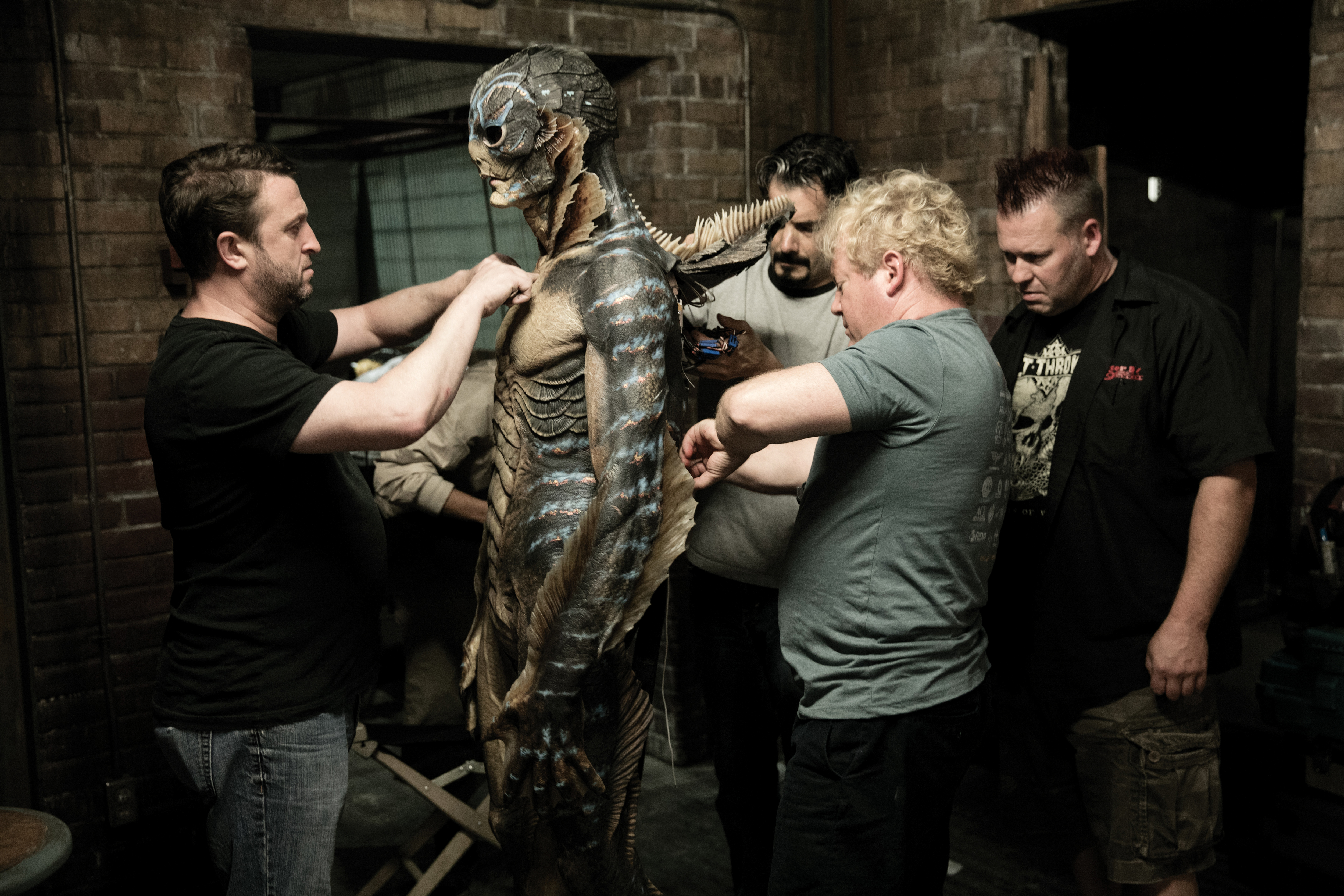
Doug Jones was scanned multiple times with and without make-up to produce a digital double of the amphibian man. “Guillermo would direct the animators as if he was directing an actor on set and we would do take after take,” states Berardi. “Then we would render our CG face or head over the photographic one. We would carefully use aspects of the real head and our render and seam it all in painstakingly. This was not a pipeline show. Every shot was crafted. There was no automatic process.”
Glowing blue stripes accent the creature suit. “That was the subdermal bioluminescence and it was all digital. We match moved our digital asset of the amphibian man over the live-action footage to make an exact match and did this bioluminescence flickering and glowing effect, which we took inspiration from cuttlefish and deep-sea creatures that have internal illumination. It couldn’t look electric or synthetic. It had to look like organic phenomena.”
Iron lung
Elisa Esposito (Sally Hawkins) meets the object of her affection for the first time when he is wheeled into the laboratory encased in an iron lung. “We scanned everything on the show so I had a digital double of that empty iron lung,” states Berardi.
“We carefully match moved the camera and iron lung in Maya. Then I had the scene recreated in 3D. Once Guillermo approved the animation, which was a swimming motion and the hand slamming into the glass, we put our digital asset into fully high-resolution volumetric water that we created in Houdini.”
The colour of the water was green not blue. “Guillermo wanted to imply that the amphibian man can’t live in regular water. Therefore, we had that green organic water with the organic mass and debris that he needs to survive; that complicated the water simulation a lot because all of that stuff needed to move and swirl around and be displaced by the swimming motion of the amphibian man.”
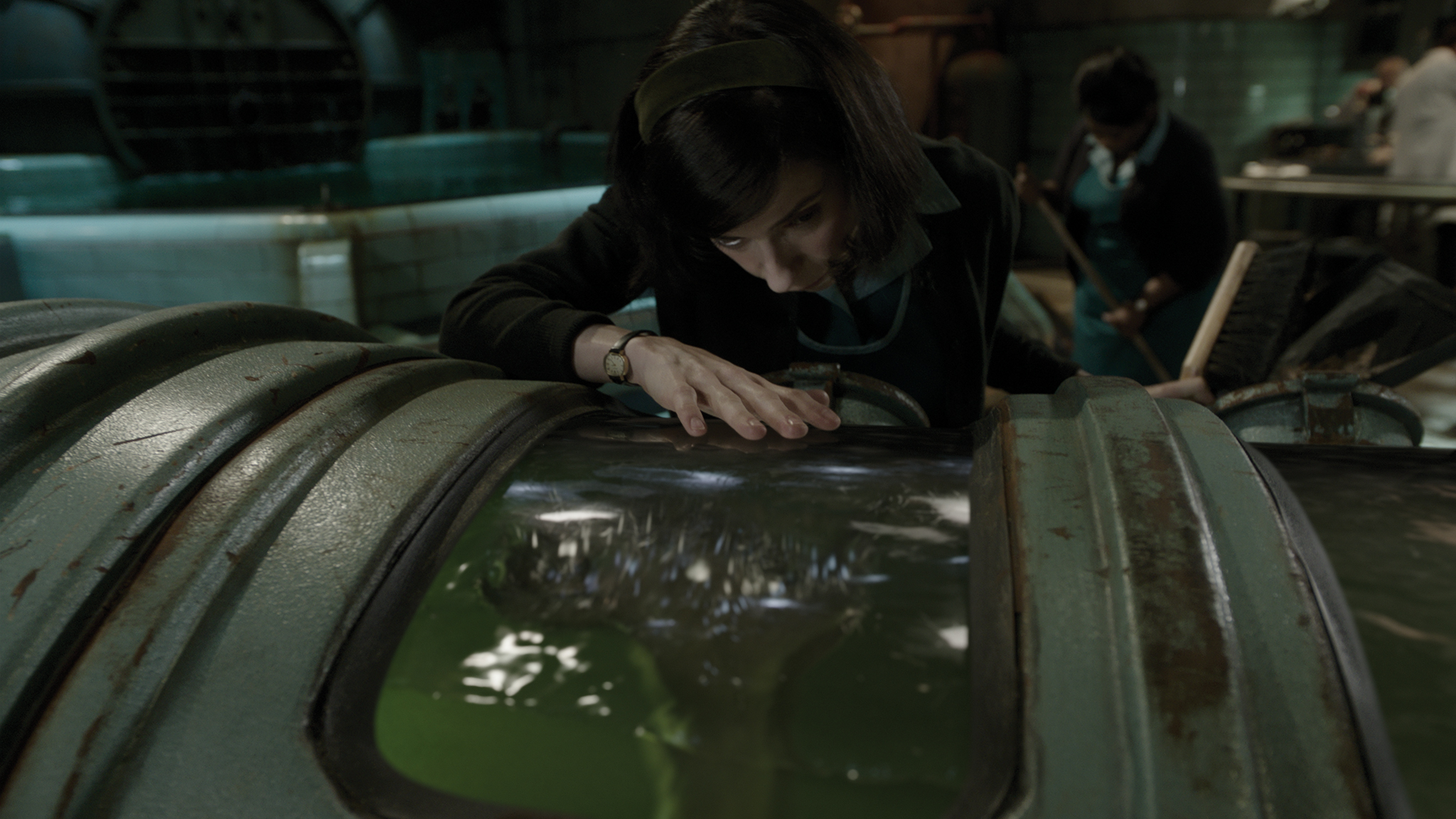
A lot of shots involve Elisa Esposito having digital wet hair. “The grooming was a long process,” reveals Berardi. “We did tons of photo surveys of Sally Hawkins. We shot extreme close-ups of her and worked with the hair and make-up people to understand the texture of the hair. We groomed the hair to match and ran a Houdini hair simulation algorithm that we developed here. Guillermo doesn’t like things to be random. We choreographed the hair movements carefully. Guillermo wanted the audience to be reminded of beautiful reeds under the water.”
The Shape of Water led to a system upgrade for Mr. X. “The animation controls and rigging that we had to develop was a new level of detail and complexity. Working with Guillermo just as a performance-based director in the facial performance was something that was also new for us. We had to be ready for that.
"For the effects simulations, especially on the water, we had to add a lot of rendering horsepower. In fact, we tripled our rendering farm to help complete this show. In the end I think we had over 15,000 cores to render this show working 24/7. Then the actual rendering of the amphibian man with the subsurface scattering, something that Guillermo cared about a lot, was a new area for us in terms of look development.
“The biggest challenge for us was realising Guillermo’s vision of a fairy tale where love conquers evil, but where the visuals are so integrated and don’t break the suspension of disbelief,” observes Berardi. “lt was a high bar with Guillermo directing and Dan Laustsen as the cinematographer. The footage was beautiful so we had to be pixel perfect and completely integrated.”
A major attraction for being part of the production for Legacy Effects was the presence of Guillermo del Toro. “What helped make this such a great project to work on was his passion, but also the type of work that we were doing was infectious,” notes Macgowan. “You can’t help but want to do the best work you can with him.”
02. Creating the opening scene
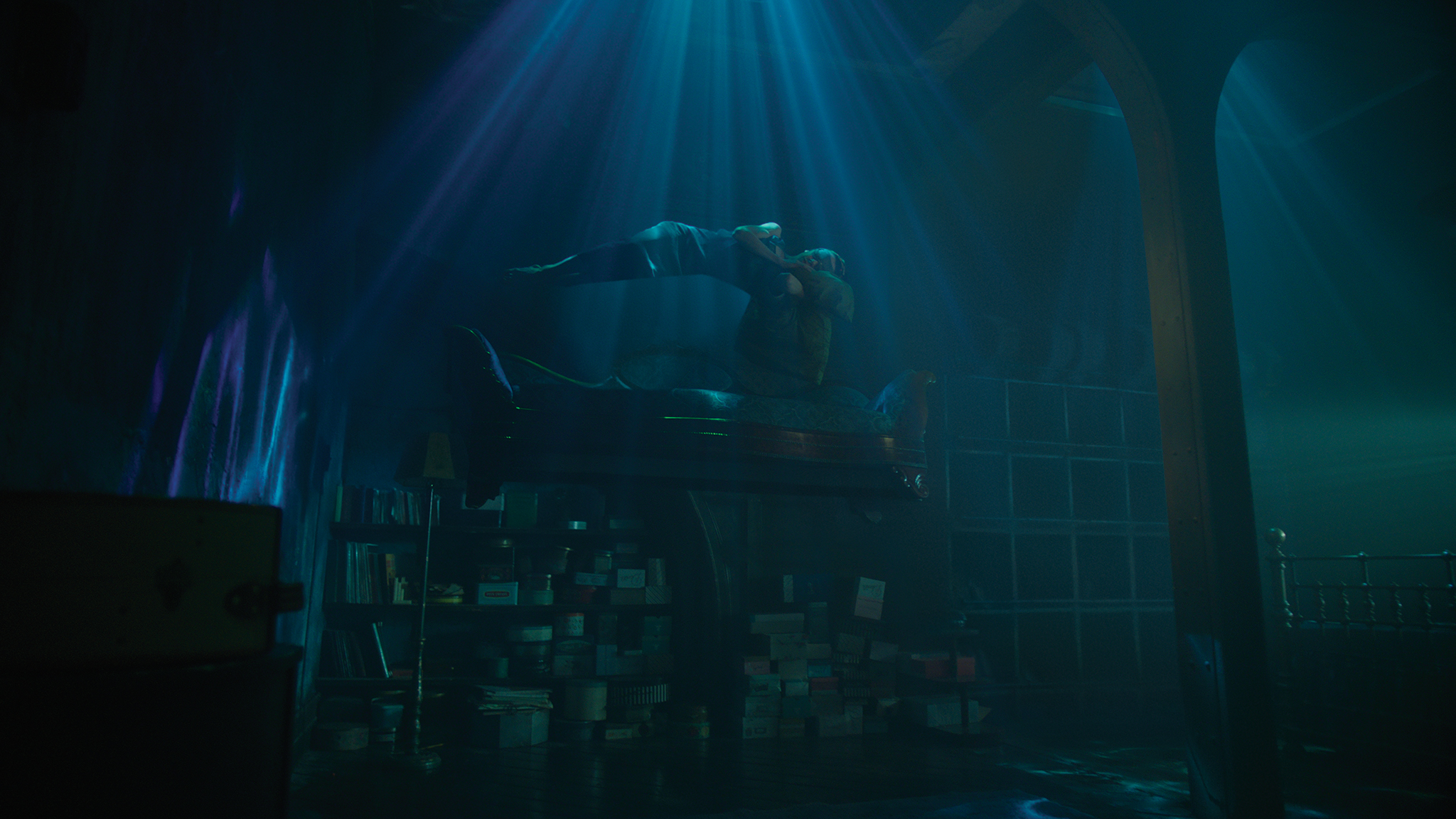
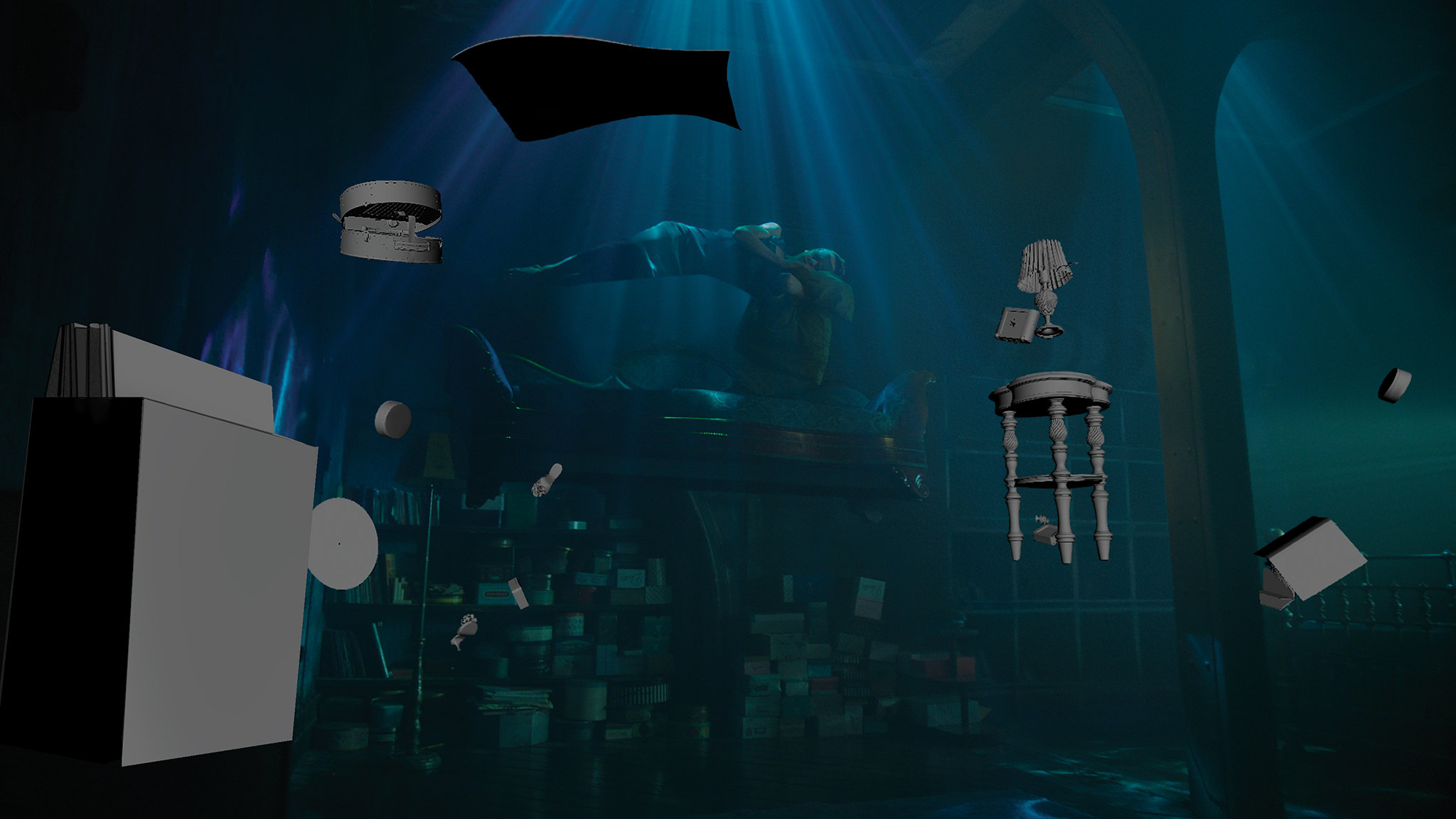
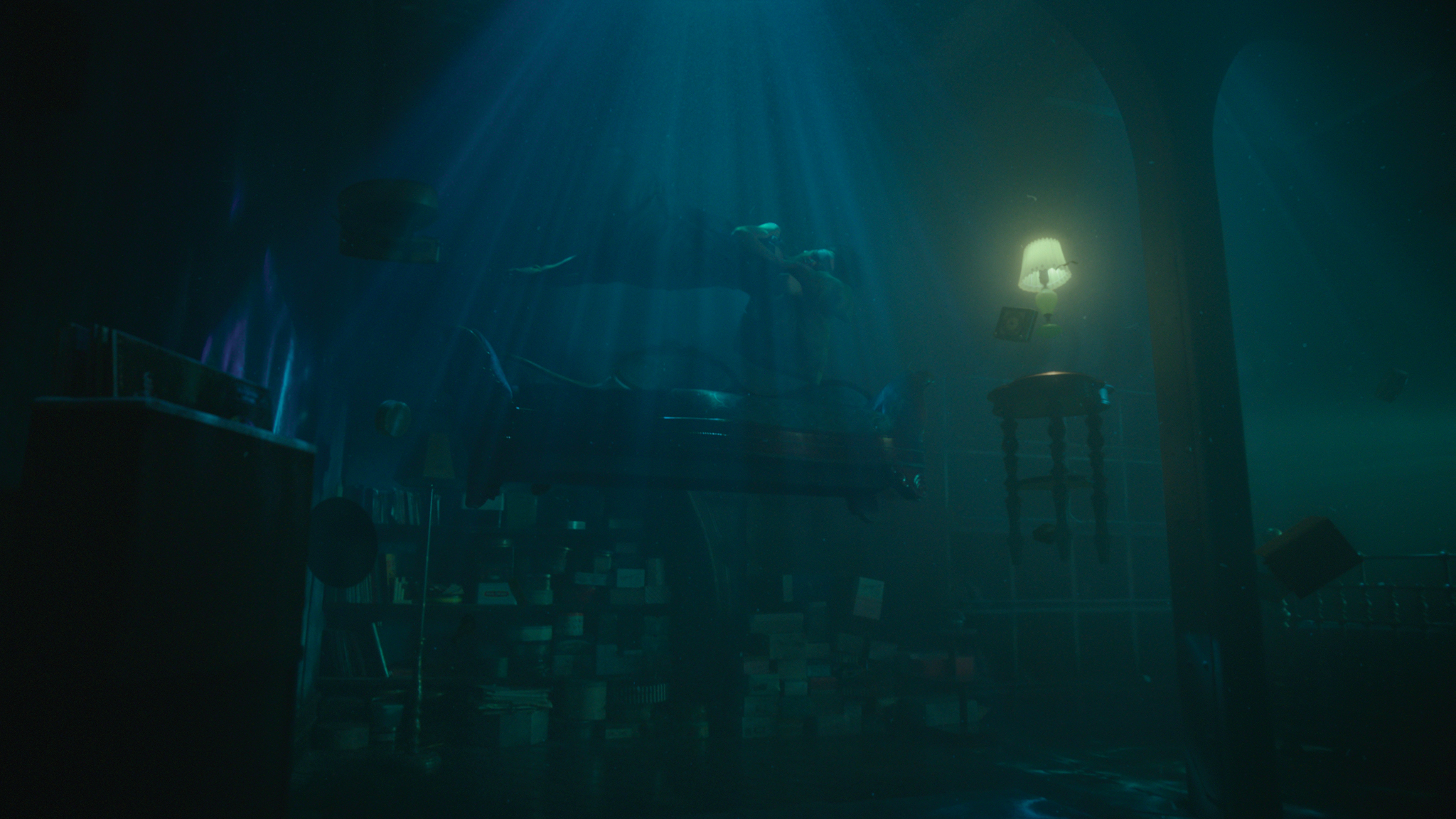
The opening scene in The Shape of Water was the hardest shot of the movie for Dennis Berardi and his team at Mr. X, which takes place in a riverbed and moves into a submerged apartment with the floating sleeping figure of Elisa Esposito (Sally Hawkins). “It’s a two-and-a-half minute shot,” explains Berardi.
“We shot some reference in Georgian Bay and Guillermo del Toro liked the feel of it, but wanted to choreograph the timing of the swimming fish and the movement of the underwater lake grasses so it was like a dance. It is all digitally created. Then we transition into a real apartment set which we shot using a dry-for-wet technique.
"We filled the set with smoke and had projectors above the set to project caustic light beams. We pinned Sally Hawkins’ hair down because it was going to be CG. Anything that is floating was digitally animated.
“Our big challenge there was doing the photoreal riverbed environment and transitioning seamlessly into a real set, while maintaining the illusion of still being underwater,” notes Berardi.
“We matched the lighting closely and equalised the two by adding a volume of floating particulate [like a current] that continued through from the beginning right to the end. That unified it. The fish unified it. All of the floating elements unified it. We carefully tried to match the look of that apartment in terms of tonal feel. It certainly wasn’t easy. We added some escaping bubbles from underwater crevasses as well.”
It is a proud moment. “You see a perfect hybrid in play where we go from a digital environment into a real one, and I hope that the audience just sees a beautiful shot.”
03. Building a cinematic environment
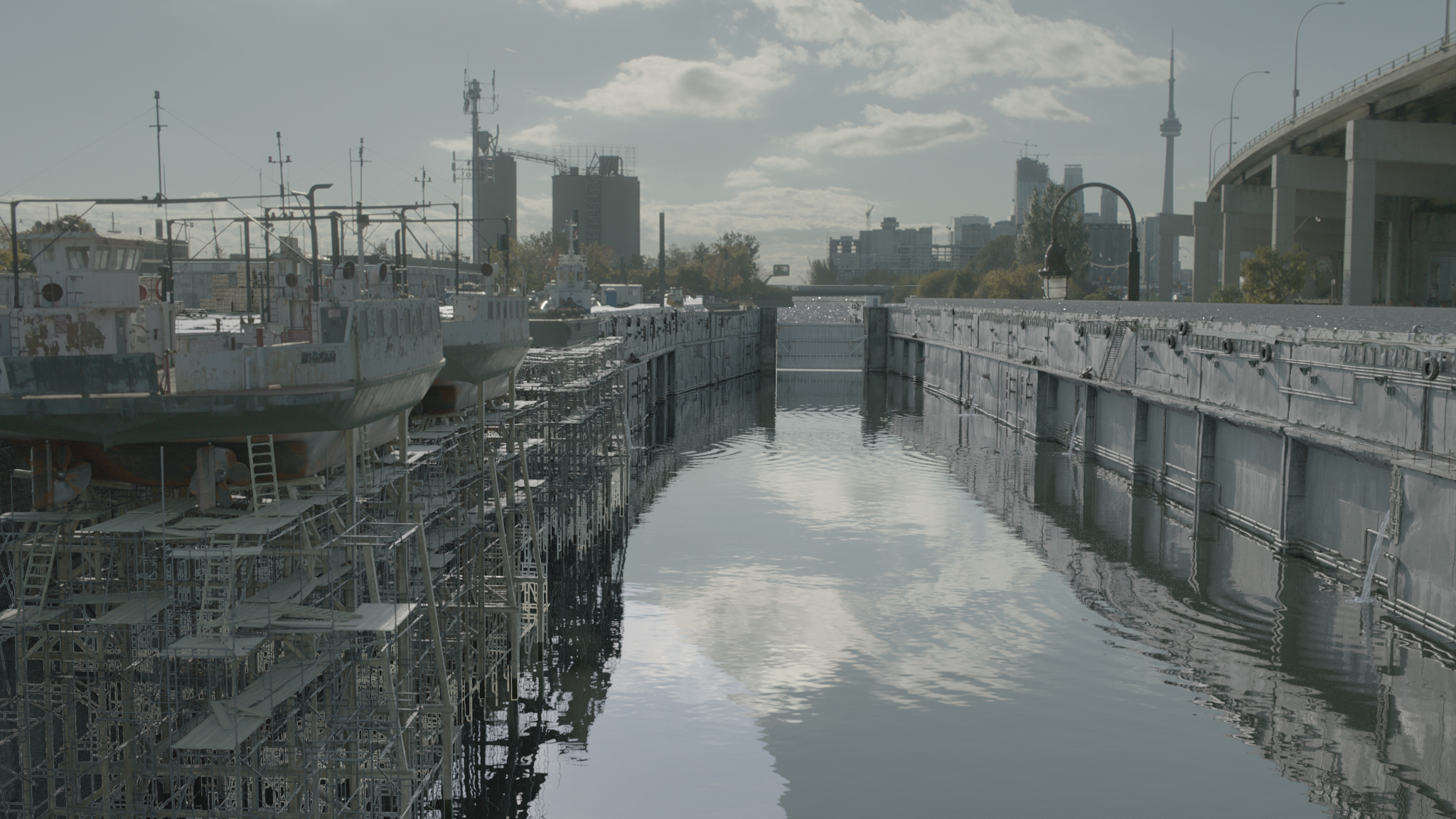
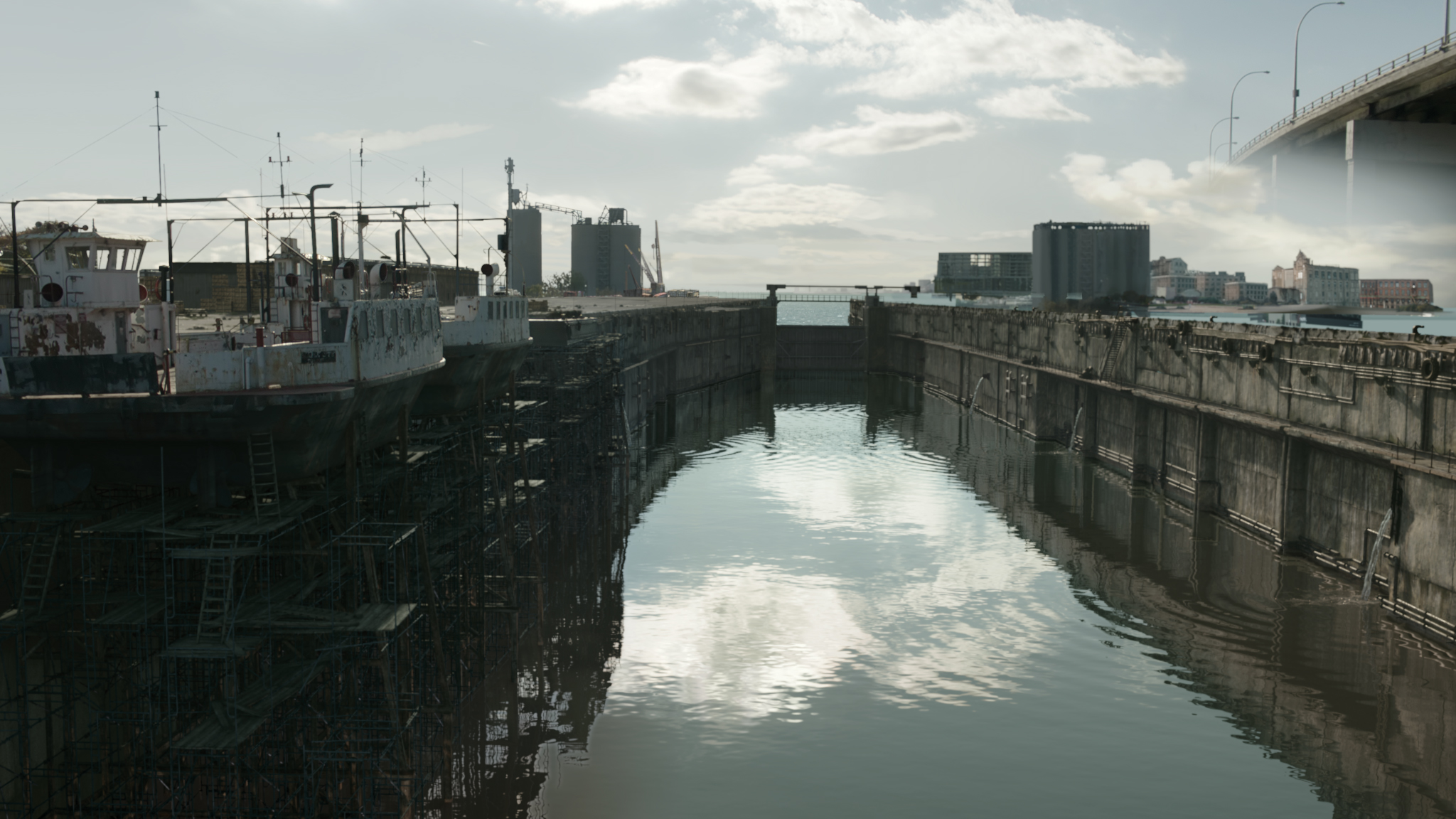
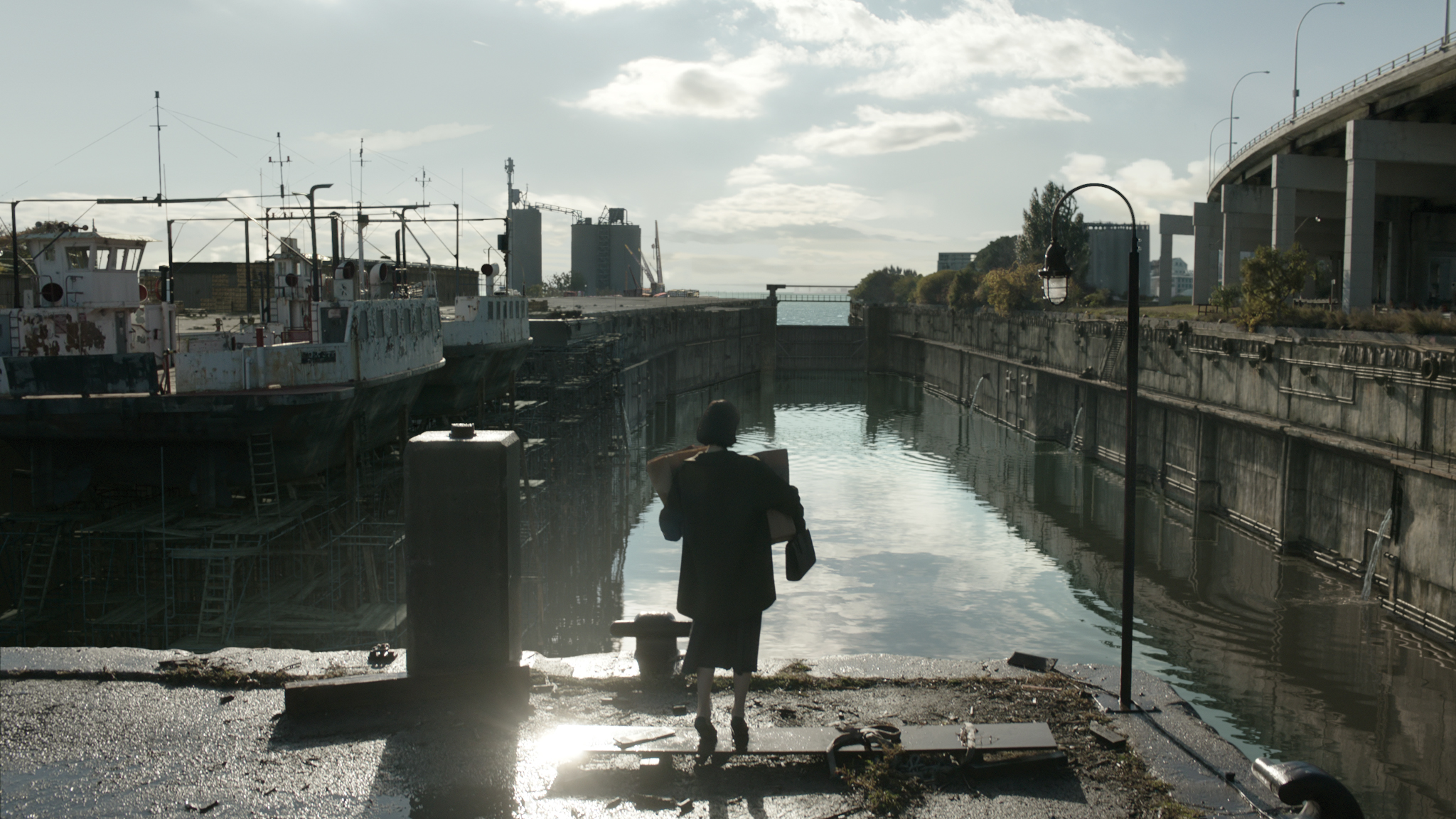
The escape plan devised by Elisa Esposito revolves around a canal which is seen as the means of returning the amphibian man to his aquatic home. Some digital wizardry was needed to transform the Toronto setting into the desired cinematic environment.
“We did have to get rid of the CN Tower but that was the easiest part of that shot,” reveals Dennis Berardi. “The most difficult part of that shot was creating the illusion that the water level of the canal is rising as the rains come. Elisa’s plan is to release the creature as the water level gets up to a certain level, so that he can get out of the canal and into the open water. We did shoot that harbour side at a location. That water is digital and all Houdini based.”
Reflecting into the digital water is the sky, which adds to the believability. “We would do full HDRI photo surveys on set and a 360-degree dome of the sky at ten stops of latitude; that gave us the lighting design,” explains Berardi. “We would re-reflect the sky that was captured on the days of our photo surveys into our digital water. In terms of the other objects in the scene, they were recreated so that we could reflect them in our synthetic water.”
04. Shooting stylish water
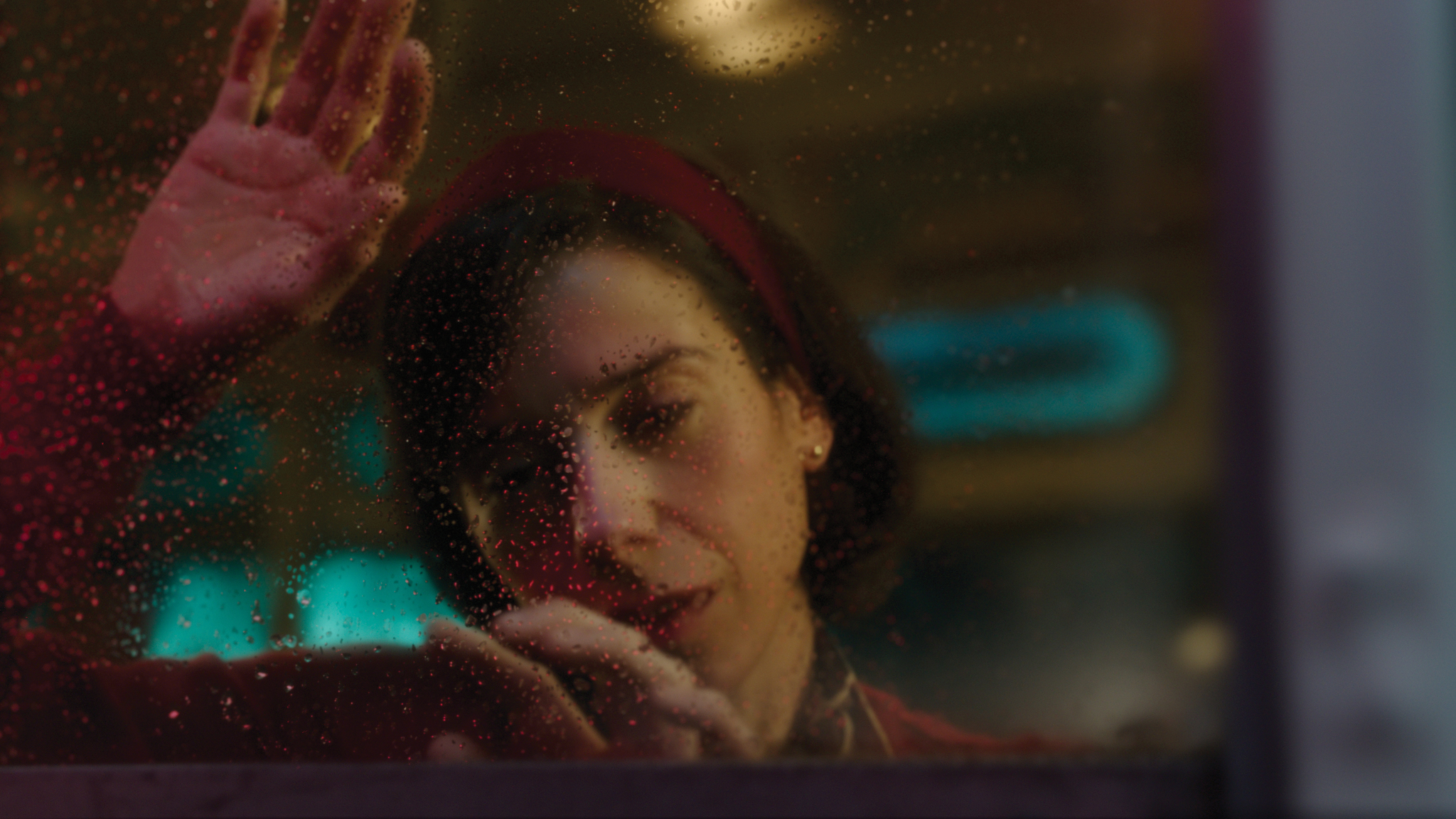
As Elisa travels on a bus and looks through the windows, water droplets gracefully perform to her finger motions on the glass.
“That was hard and fun to do,” states Dennis Berardi. “Guillermo del Toro wanted to foreshadow the dance routine between the creature and Elisa that happens later in the movie. It’s supposed to be a ballet in the water droplets.”
A plate was shot of Sally Hawkins moving her fingers against the bus window. “We had talked about pushing in on Elisa and then into a more macro world. We played with zooming into a macro world and got it wrong a lot of times. It felt synthetic. We had to be subtle with the transition from 1:1 scale. We’re looking through a bus window that is three feet across down to a scale that is only half an inch across.
"We designed a bunch of style frames to show Guillermo where we were going and he signed off on it in principle. In the end, we took 15 seconds to get into that fully macro world so it’s a slow transition hidden in many frames."
05. Flooding a bathroom
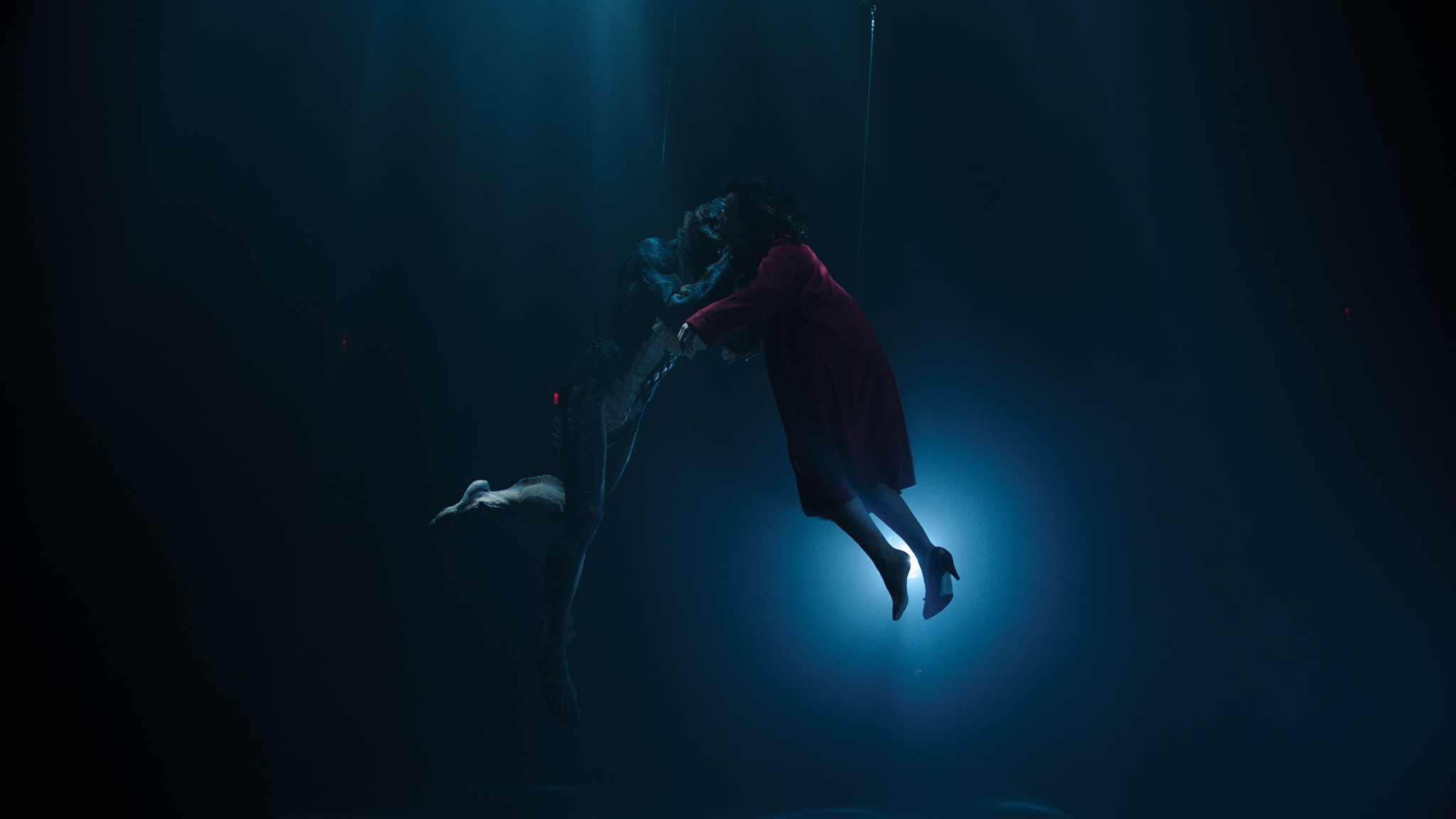
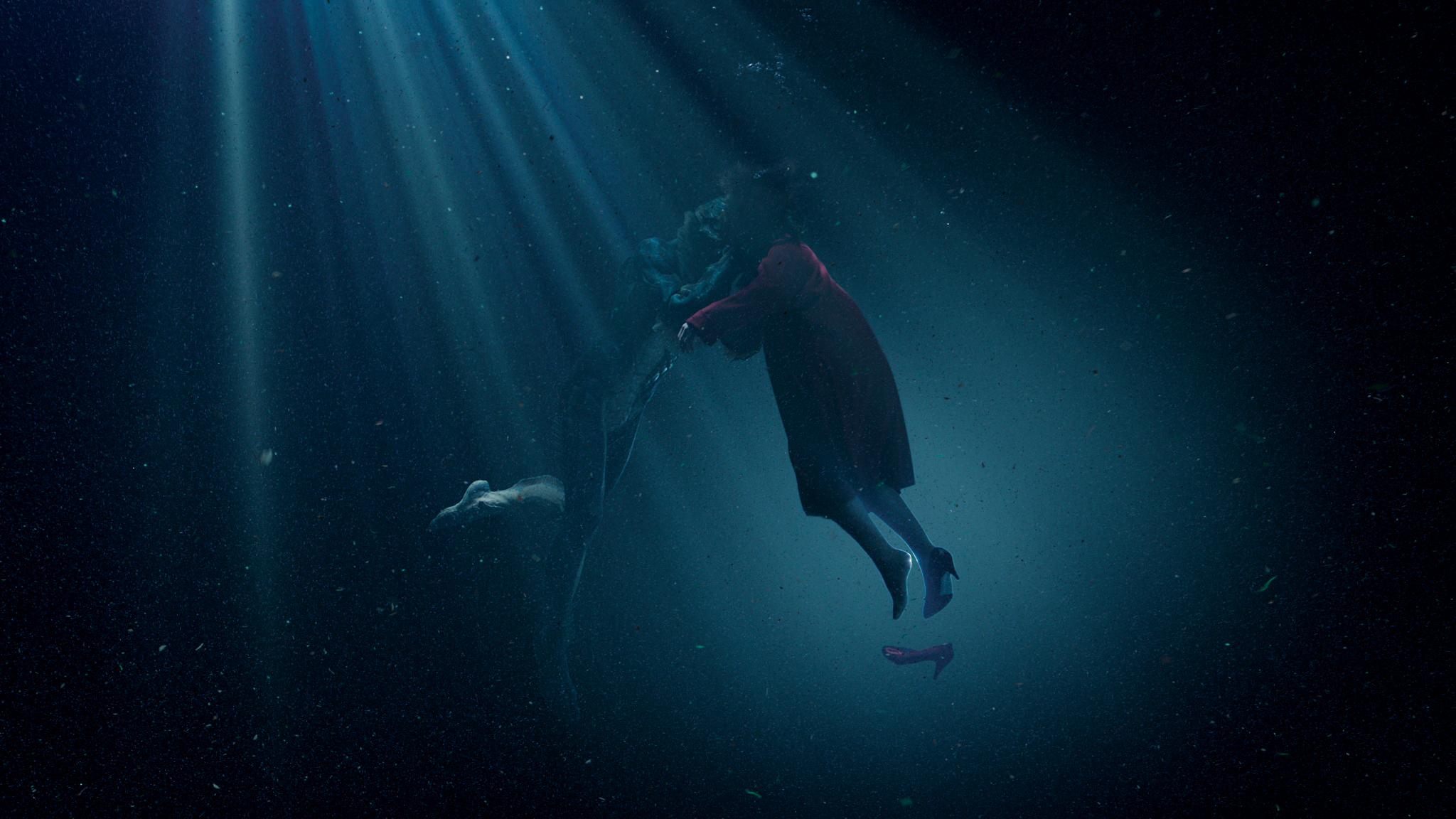
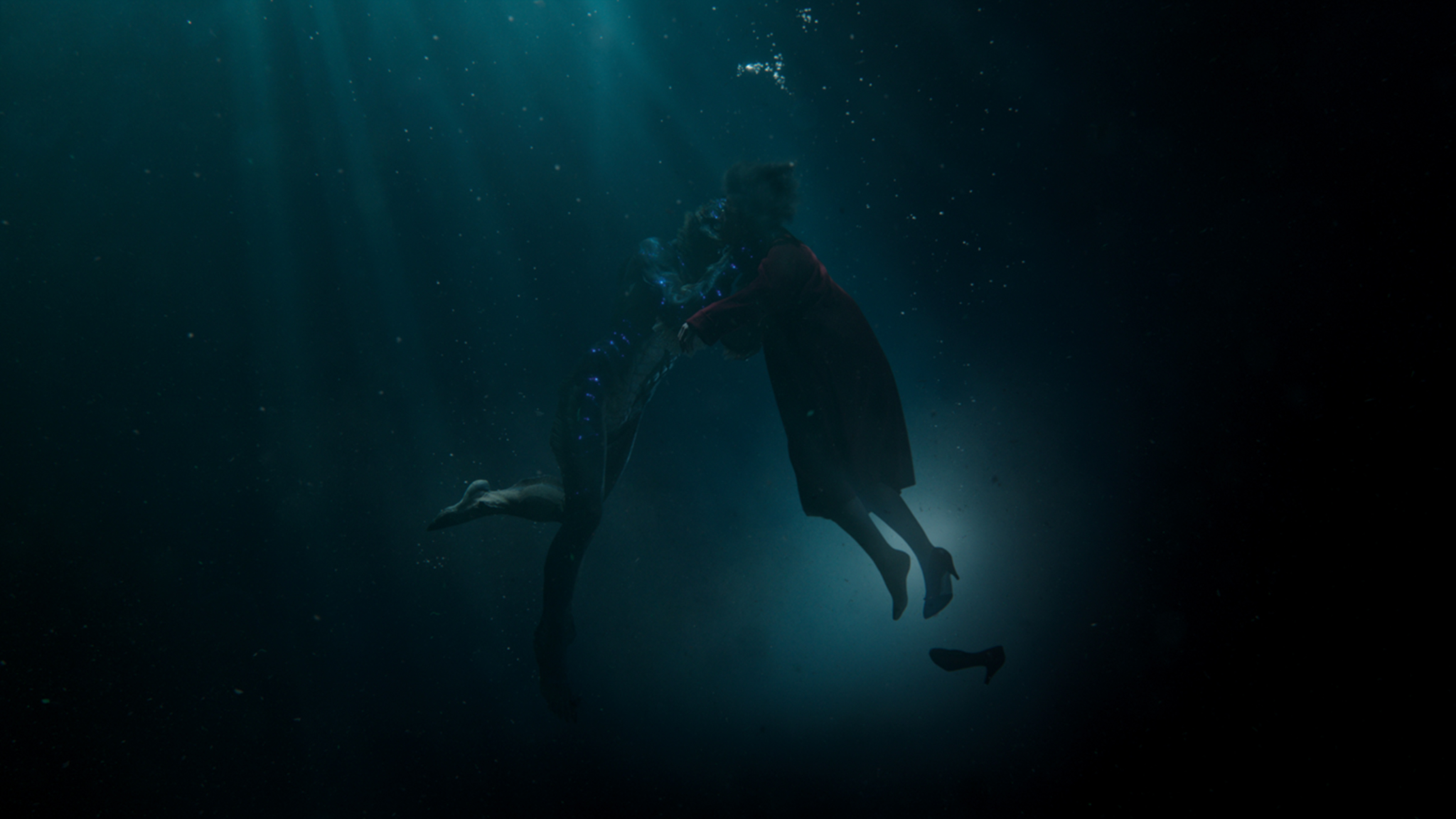
An intimate moment occurs when Elisa Esposito floods her bathroom to create a makeshift water tank so that she can make love to the amphibian man.
“That was great,” states Berardi. “We sunk the bathroom set in a water tank for their embracing underwater love scene. I also shot a green screen element where we built a green screen stand-in door, had a thousand gallons of water in a water tank, did a quick release, and the water would open and flood through the doors.”
The shots of the water filling up are digital. “The aftermath when Giles [Richard Jenkins] pulls the door open and the water escapes and splashes out, that’s a digital shot as well,” remarks Berardi. “It was challenging because we had to create this believable illusion that this volume of water is escaping out of a bathroom door. Guillermo wanted it to dissipate quite quickly. He also wanted it to be elegant, not violent. Guillermo wanted it to be fun.
"In our early simulations we were running these physically correct volumes of water through that door and the water rushed violently. We had to tone it down and come up with a graceful take before Guillermo started to like and believe in it. I did dozens and dozens of experimental internal takes before I would show Guillermo anything. Once I did he would start to revise us."
While all of this is taking place water leaks into the movie theatre situated beneath the apartment in which Elisa lives. “That was easier. I’m always surprised that people pick it out. It may be a testament to the sound design as well because we only put five or six streams of water droplets in there. The rest was sound. We didn’t have to do that much to create that illusion.”
Book your Vertex 2018 ticket now
On 13 March we’re launching Vertex 2018: a one-day event in London for the CG community. Featuring a jam-packed schedule of inspiring talks from the industry’s most exciting practitioners, there will also be workshops, networking opportunities, a busy expo and lots more. Get your ticket to Vertex 2018 now.
This article was originally published in issue 231 of 3D World, the world's best-selling magazine for CG artists. Buy issue 231 here or subscribe to 3D World here.
Related articles:

Thank you for reading 5 articles this month* Join now for unlimited access
Enjoy your first month for just £1 / $1 / €1
*Read 5 free articles per month without a subscription

Join now for unlimited access
Try first month for just £1 / $1 / €1

Trevor Hogg is a freelance video editor and journalist, who has written for a number of titles including 3D World, VFX Voice, Animation Magazine and British Cinematographer. An expert in visual effects, he regularly goes behind the scenes of the latest Hollywood blockbusters to reveal how they are put together.
